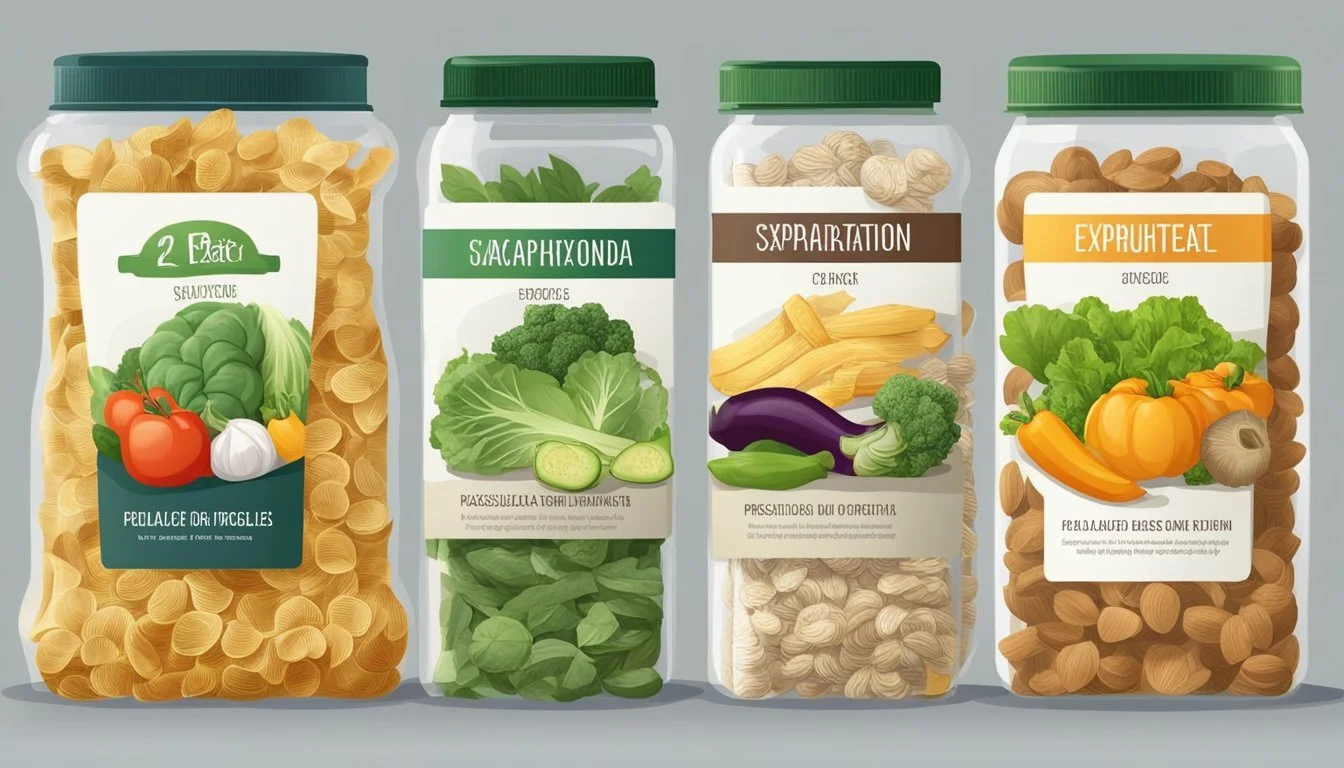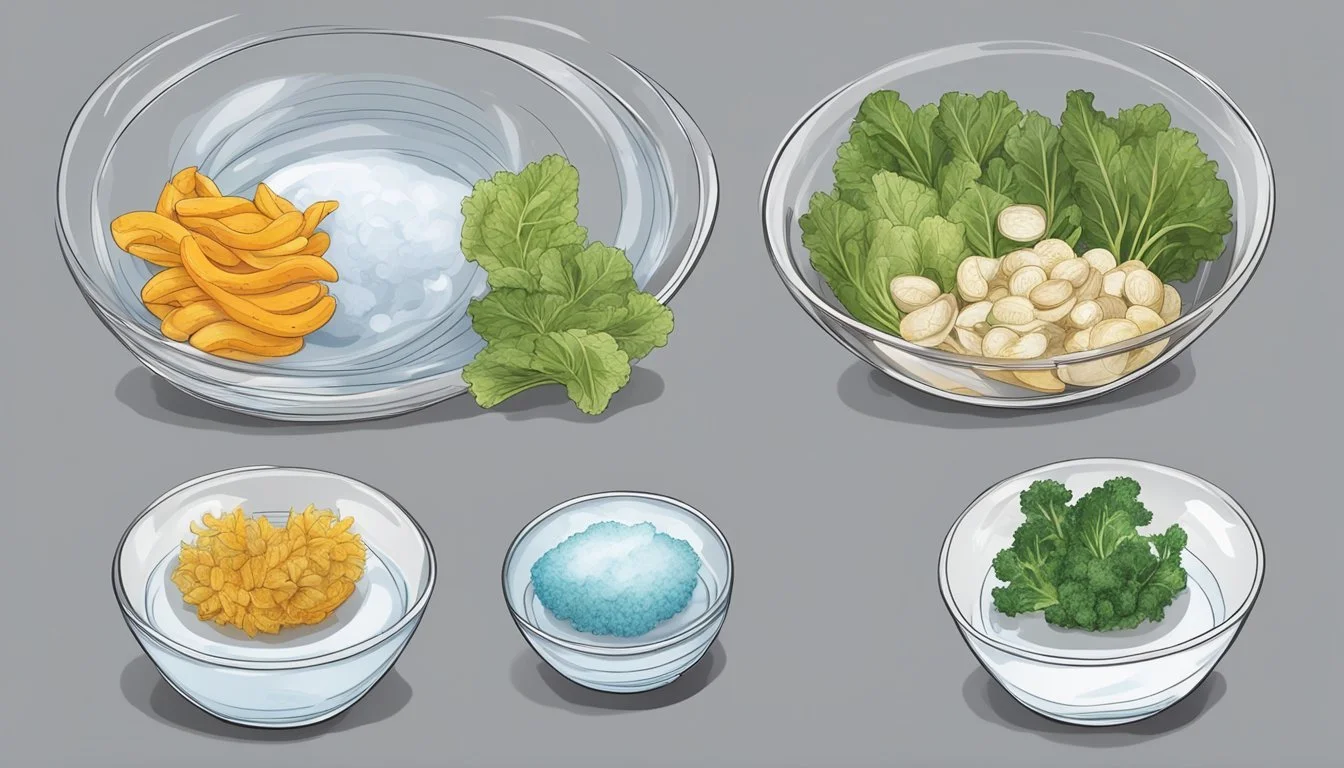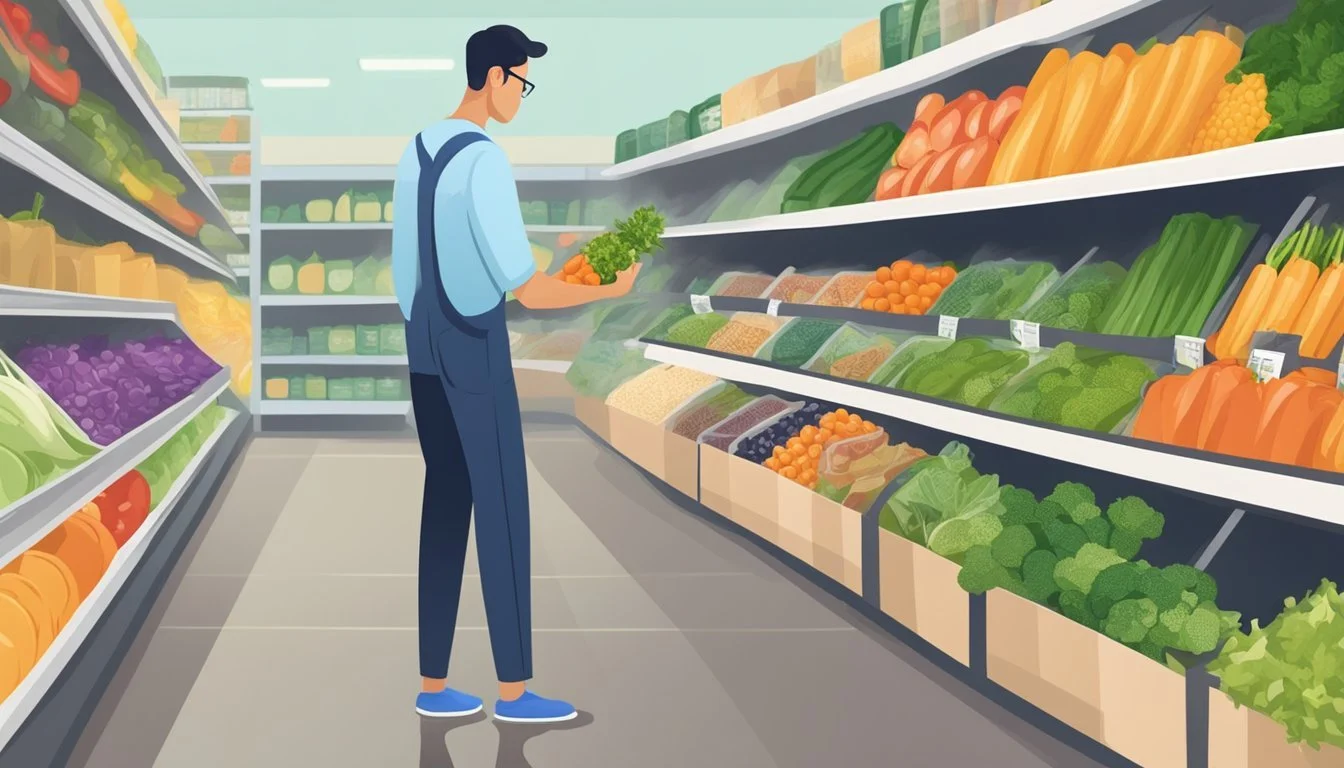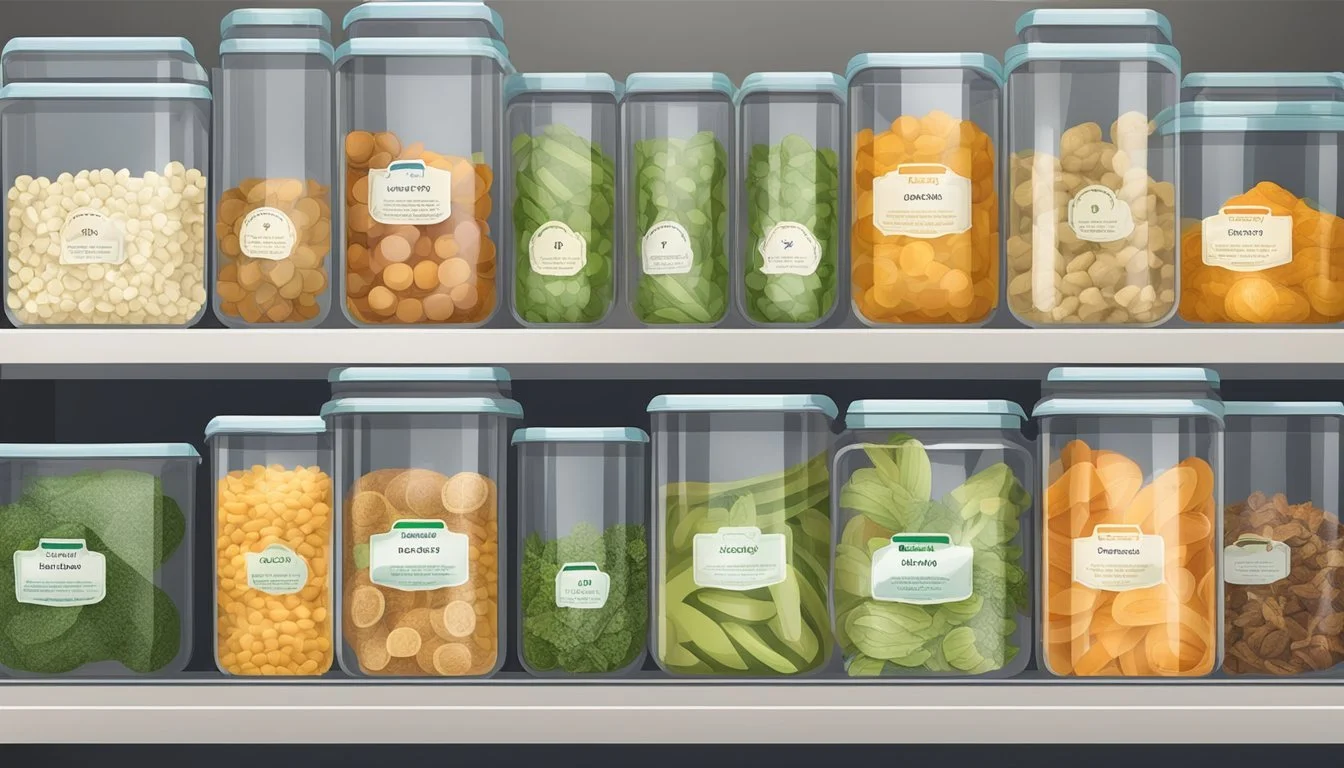How Long Do Dehydrated Vegetables Last?
Uncovering Shelf Life and Storage Tips
Dehydrated vegetables (how long do dehydrated vegetables last?) are a staple in the pantry of anyone looking to extend the shelf life of their produce through effective preservation methods. The dehydration process removes moisture from vegetables, inhibiting the growth of bacteria, yeasts, and molds that typically spoil food. This method of food preservation not only retains the nutritional value of the vegetables but also makes for a lightweight, space-saving food option ideal for storage and transport.
The shelf life of dehydrated vegetables is significantly influenced by the storage conditions. If stored in a cool, dry place and vacuum-sealed to prevent the reintroduction of moisture and air, dehydrated vegetables can last up to 25 years without significant loss of flavor or texture. Factors such as exposure to light, moisture, and air can all reduce the shelf life, making proper storage pivotal to maintaining the quality of the dehydrated products.
Despite the long potential shelf life, common practice suggests that dehydrated vegetables are best consumed within 6 to 12 months when stored in airtight containers at room temperature. During this time frame, the vegetables remain dry and free of odors, ensuring that they retain taste and are safe for consumption. Regularly checking the condition of the stored vegetables is crucial to ensure that they remain free from spoilage and are available when needed.
Understanding Dehydration
Dehydrating vegetables is a time-tested method of preserving their nutritional value and extending their shelf life. This section delves into the tangible advantages of dehydration and outlines the essential steps of the process.
Benefits of Dehydration
Dehydration offers several practical advantages:
Preserves Nutrients: Dehydrating vegetables effectively maintains most of their nutrients, especially when compared to other preservation methods. While some vitamin loss, particularly water-soluble vitamins like vitamin C, can occur during dehydration, most minerals, fibers, and other nutrients remain intact.
Extends Shelf Life: Properly dehydrated produce can last for years without the need for refrigeration, dramatically extending the shelf life of fresh vegetables.
Reduces Storage Space: By removing water content, dehydration reduces the size and weight of the vegetables, simplifying storage and transportation.
Dehydration Process
The process of dehydrating vegetables involves several crucial steps:
Selection and Preparation: Use fresh, high-quality vegetables for dehydrating. They should be cleaned and cut uniformly to ensure even drying.
Drying: Vegetables are dehydrated at low temperatures, generally around 125°F (52°C), which helps prevent the exterior from hardening while the inside remains moist, which could lead to spoilage.
Storage: To maximize shelf life, dehydrated vegetables should be vacuum sealed, mitigating the risk of moisture and air, which can lead to oxidation and bacterial growth. They should then be stored in a cool, dry place away from light.
Proper Storage Fundamentals
Proper storage of dehydrated vegetables maximizes their shelf life. The key elements involve the use of appropriate containers and the maintenance of optimal storage conditions.
Choosing the Right Containers
When selecting containers for dehydrated vegetables, one must ensure they are airtight. Mason jars, mylar bags, and commercial airtight containers are excellent choices. Vacuum sealing further enhances shelf life by removing air that could facilitate oxidation or moisture reintroduction.
Glass Containers: Mason jars offer visibility and a secure seal.
Mylar Bags: These are lightweight and block out light, which can degrade the quality of dehydrated foods.
Plastic Containers: Should be food-grade and have a tight seal.
Ideal Storage Conditions
Storing dehydrated vegetables correctly involves placing them in a cool, dry place away from direct sunlight. The preferred storage conditions include low humidity and stable temperatures.
Temperature: Keep the storage area at or below 60°F (15°C) if possible.
Humidity: Aim for less than 15% humidity in the storage environment.
Pantry Considerations: A pantry often provides an ideal setting, but ensure it is not near appliances that produce heat or areas that experience temperature fluctuations.
By adhering to these storage principles, the shelf life of dehydrated vegetables can be significantly extended.
Shelf Life and Preservation
The longevity of dehydrated vegetables is heavily influenced by storage conditions and the methods used to preserve them. Ensuring optimal storage can significantly extend their shelf life, while recognizing the signs of spoilage is vital to determining their safety for consumption.
Factors Affecting Shelf Life
Several variables directly impact the shelf life of dehydrated foods:
Temperature: Ideally, they should be stored at a stable, cool temperature. A standard guideline is 60ºF for optimal longevity.
Moisture Content: Dehydrated vegetables must have low moisture content to prevent bacterial growth and spoilage.
Oxygen Exposure: Oxygen can lead to oxidation, decreasing shelf life and quality. Oxygen absorbers are often used to maintain an oxygen-free environment in storage containers.
Extending Shelf Life
To maximize the shelf life of dehydrated vegetables, the following practices are recommended:
Vacuum Sealing: Removes air from packaging and reduces the risk of oxidation.
Cool, Dry Storage: Limits enzyme activity and prevents spoilage.
Use of Oxygen Absorbers: Preserves freshness and extends shelf life by preventing oxidation.
Signs of Spoilage
Dehydrated vegetables will exhibit several signs when they begin to spoil:
Change in Color: Any drastic changes may indicate spoilage.
Odor: An unusual smell is a clear sign that dehydrated vegetables may not be safe to eat.
Texture: They should remain dry; any stickiness or moisture suggests they have spoiled.
Safety and Health Considerations
In assessing the safety and health considerations associated with dehydrated vegetables, one must consider the potential risks involved in their consumption and storage, as well as the nutritional value retained after the dehydration process.
Potential Risks
When dehydrated vegetables are not stored properly, they are susceptible to bacteria and mold growth. Food safety dictates that dehydrated vegetables need to be kept in a cool, dry place to prevent the proliferation of bacteria. If exposed to moisture or warmth, the risk of contamination increases. This can lead to foodborne illnesses if consumed. It is crucial to ensure that vacuum sealing is properly applied to eradicate air which could otherwise foster bacteria growth.
Nutritional Value
The dehydration process involves the removal of water from vegetables, which generally preserves the nutritional value. However, certain heat-sensitive nutrients, such as vitamin C and some B vitamins, can deteriorate during the dehydration process. Dehydrated vegetables still provide dietary fiber, minerals, and other stable vitamins, making them a healthy option if consumed within the appropriate shelf life and if they were properly dehydrated and stored.
Special Considerations Based on Vegetable Types
When dehydrating vegetables, different types have unique storage characteristics and shelf lives. Understanding these can help maximize the longevity and quality of the dehydrated produce.
Leafy Greens and Herbs
Leafy greens, such as spinach and herbs like parsley, have a delicate cellular structure that dehydrates quickly. However, they are also more susceptible to degradation if not stored properly. It is essential that they are completely dry before storage to prevent mold. A desiccant can be used to maintain dryness.
Storage Time: Typically 6-12 months
Optimal Conditions: In airtight containers, away from light and heat.
Root Vegetables
Root vegetables like carrots and potatoes have a dense structure, which often requires a longer drying time to ensure all moisture is removed. Carrots especially, when sliced thin and dehydrated, can last notably long due to their low moisture content.
Carrots: Can last up to several years if dried and stored properly.
Potatoes: Best used within a year for optimal taste and nutrition.
Bulb and Stem Vegetables
Bulb vegetables like onions and stem vegetables like peppers typically dehydrate well due to their robust flavors and lower moisture content. For these types of vegetables, ensuring that they are sliced uniformly before dehydrating can help in achieving an even dryness and extend shelf life.
Onions: Ideal for long-term storage with a shelf life of up to 1 year.
Peppers: If thoroughly dehydrated, can last beyond a year, but check regularly for signs of moisture.
Packaging and Labeling
When preserving dehydrated vegetables, the packaging plays a crucial role in maintaining food quality. The most effective method for prolonging shelf life is to use a vacuum sealer. This device extracts air from the package, thus reducing oxidation and inhibiting the growth of bacteria and mold.
For optimal results, individuals should store dehydrated vegetables in storage containers that are airtight and moisture-proof. These include options like:
Mylar bags with oxygen absorbers
Mason jars with vacuum-sealed lids
High-quality freezer bags
Labeling is equally significant because it allows for easy identification and helps in tracking the storage duration. Labels should contain the following information:
Type of vegetable: Specify the contents for quick retrieval.
Date of dehydration: To monitor the age and ensure the product is used within its best period.
Packaging method: Indicate if the item is vacuum sealed or contains oxygen absorbers.
By adhering to these packaging and labeling standards, individuals can help ensure the longevity and safety of their dehydrated vegetables. Proper packaging and clear labels contribute to ease of use and can prevent spoilage, keeping dehydrated foods in good condition for years.
Advanced Storage Techniques
To maximize the shelf life of dehydrated vegetables, implementing advanced storage techniques is essential. These methods not only extend longevity but also preserve the quality of the dried produce.
Use of Desiccants and Oxygen Absorbers
Desiccants and oxygen absorbers play a crucial role in preventing spoilage. Desiccants such as silica gel packets help maintain a moisture-free environment. Oxygen absorbers are specially designed to remove the oxygen from the storage container, hindering the growth of aerobic bacteria and the oxidation process.
Silica Gel Packets: Include in storage containers to absorb excess moisture.
Oxygen Absorbers: Place in containers to eliminate oxygen, preserving color, flavor, and nutrition.
Vacuum Sealed vs. Airtight Storage
Vacuum sealing and airtight storage methods significantly differ in effectiveness.
Vacuum Sealed Storage: Removes almost all air, offering superior protection against oxidation and pests.
Airtight Containers: Although they do not remove air, they prevent air exchange, slightly extending the shelf life.
Glass Jars: Can be sealed airtight or vacuum-sealed with appropriate lids and vacuum-sealing tools.
Freezing Dehydrated Vegetables
Storing dehydrated vegetables in the freezer further slows down degradation.
Protection: Freezing offers an additional barrier against pests and enzymatic decay.
Note: Ensure vegetables are fully dehydrated to prevent ice formation.
Mylar Bags with Oxygen Absorbers are ideal for freezer use, providing a dual layer of protection.
Troubleshooting Common Issues
When storing dehydrated vegetables, maintaining their quality involves managing environmental factors meticulously. Readers should be aware that high humidity, temperature variances, and pests pose the greatest threats to the longevity of dehydrated products.
Dealing with High Humidity
High humidity can revive microbial growth in dehydrated vegetables, drastically reducing their shelf life. It is crucial to store these vegetables in airtight containers with desiccant packs to absorb any moisture that could lead to spoilage. If the area's humidity consistently exceeds 60%, the use of a dehumidifier can help maintain optimal dryness levels for storage.
Controlling Temperature Fluctuations
The temperature where dehydrated vegetables are stored should ideally be steady and cool. Fluctuations can trigger the degradation of nutrients and expedite spoilage. Maintaining a storage environment at or below 60°F (15°C) will help to preserve their quality. If vegetables are exposed to high temperatures, they should be checked regularly for signs of spoilage and consumed promptly if any doubts arise.
Protecting Against Pests
Dehydrated vegetables can attract insects and sustain an insect infestation, which not only consumes the food but can also introduce microbial growth. To prevent this, storage containers should be robust and sealed properly. Consider using food-grade plastic, glass, or metal containers with tight-fitting lids. It's also advisable to inspect the storage area regularly and ensure it's clean and free from residue that could attract pests.
Rehydration and Usage of Dehydrated Vegetables
Dehydrated vegetables are a staple for long-term food storage due to their low water content and reduced potential for food waste. Proper rehydration, however, is critical to restoring the vegetables to a state suitable for cooking and consumption.
Rehydration Techniques
To rehydrate vegetables, one typically submerges them in water or another cooking liquid. This process can vary in time depending on the vegetable's size and type. A few methods include:
Soaking in Cold Water: Generally, for every one cup of dehydrated vegetables, one adds approximately 2 cups of cold water. They should soak for 1-2 hours or until fully rehydrated.
Pouring Boiling Water: To speed up the process, one can pour boiling water over the dehydrated vegetables, which reduces rehydration time significantly. The ratio is the same: 2 cups of boiling water per one cup of vegetables, with the added step of covering the bowl to retain heat and reduce rehydration time.
Incorporating into Meals
Once rehydrated, the vegetables are ready to be incorporated into meals. They can replace fresh vegetables in most recipes, including soups, stews, and casseroles. Here's how:
Soups and Stews: Add rehydrated vegetables directly into the pot during cooking, allowing them to simmer with the other ingredients.
Casseroles and Baked Dishes: One incorporates the vegetables into the mix before baking, adjusting the liquid in the recipe to account for any additional water from the vegetables.
These techniques ensure that dehydrated vegetables deliver both the nutritional benefits and the desired culinary outcomes when used in meal preparations.
Buying and Selecting Dehydrated Vegetables
When purchasing dehydrated vegetables, consumers should consider the product's quality and shelf life, as well as the reputation of the purchase source. Ideal storage conditions for dehydrated vegetables include a cool, dark place, often in glass containers to preserve quality.
Quality Indicators
Quality indicators for dehydrated vegetables encompass visual appeal, aroma, and texture. High-quality dehydrated vegetables should have a vibrant color, free from any signs of browning or discoloration, which can suggest degradation. They should also be dry to the touch without any stickiness or clumps that could indicate moisture presence. A fresh, natural smell is a positive sign; any off odors suggest spoilage or contamination. It is important for the vegetables to maintain a consistent texture, indicative of proper dehydration and handling.
Color: Bright, consistent
Texture: Firm, dry
Aroma: Natural, fresh
Packaging: Airtight, no visible damage
Where to Purchase
Dehydrated vegetables are typically found in several retail environments. Consumers may find a wide variety at specialty health food stores, which often offer organic and non-GMO options. Grocery stores also stock dehydrated vegetables, frequently located in the aisle with other dried goods or natural food sections. Selection can vary, so for more rare or exotic options, online retailers can be a convenient source.
Purchasers should seek out retailers with good turnover to ensure the dehydrated vegetables haven't been on shelves for extended periods, which can impact food quality and shelf life. Additionally, one should inspect the packaging for signs of integrity, such as sealed airtight and undamaged containers, preferably opaque or dark glass to block light:
Health food stores: Organic, non-GMO selections
Grocery stores: Common options, check turnover
Online retailers: Wide selection, convenience
Packaging: Sealed, opaque or dark containers
Legal and Regulatory Guidelines
Selling dehydrated vegetables requires adherence to specific legal and regulatory guidelines to ensure consumer safety and compliance with food safety laws.
Food Labeling Requirements
Under federal and state regulations, the labeling of dehydrated vegetables must be accurate and informative. Sellers are compelled to include the following information on labels:
Ingredients: A list of all ingredients used, including any preservatives.
Net Quantity: The amount of food in the package.
Allergens: Disclosure of potential allergens.
Nutrition Information: Standardized nutrition facts.
A declaration that the packaging materials are BPA-free and food-safe, if applicable.
Labels must also provide proper storage instructions to prevent the growth of foodborne pathogens like salmonella or botulism.
Standards for Food Safety
Food safety standards require dehydrated vegetables to be processed and stored in a manner that minimizes the risk of contamination. These standards include:
Processing Controls: To ensure safety, food must be dehydrated at the right temperature for an adequate amount of time to remove sufficient moisture that could harbor microorganisms.
Storage Conditions: Dehydrated vegetables should be stored in a cool, dry place to prevent microbial growth.
Regulations stipulate that dehydrated foods must sometimes include preservatives as a safety measure, depending on the type of food and target shelf-life.
It's imperative for sellers to comply with these regulations to maintain food safety and quality, and avoid potential legal risks.









